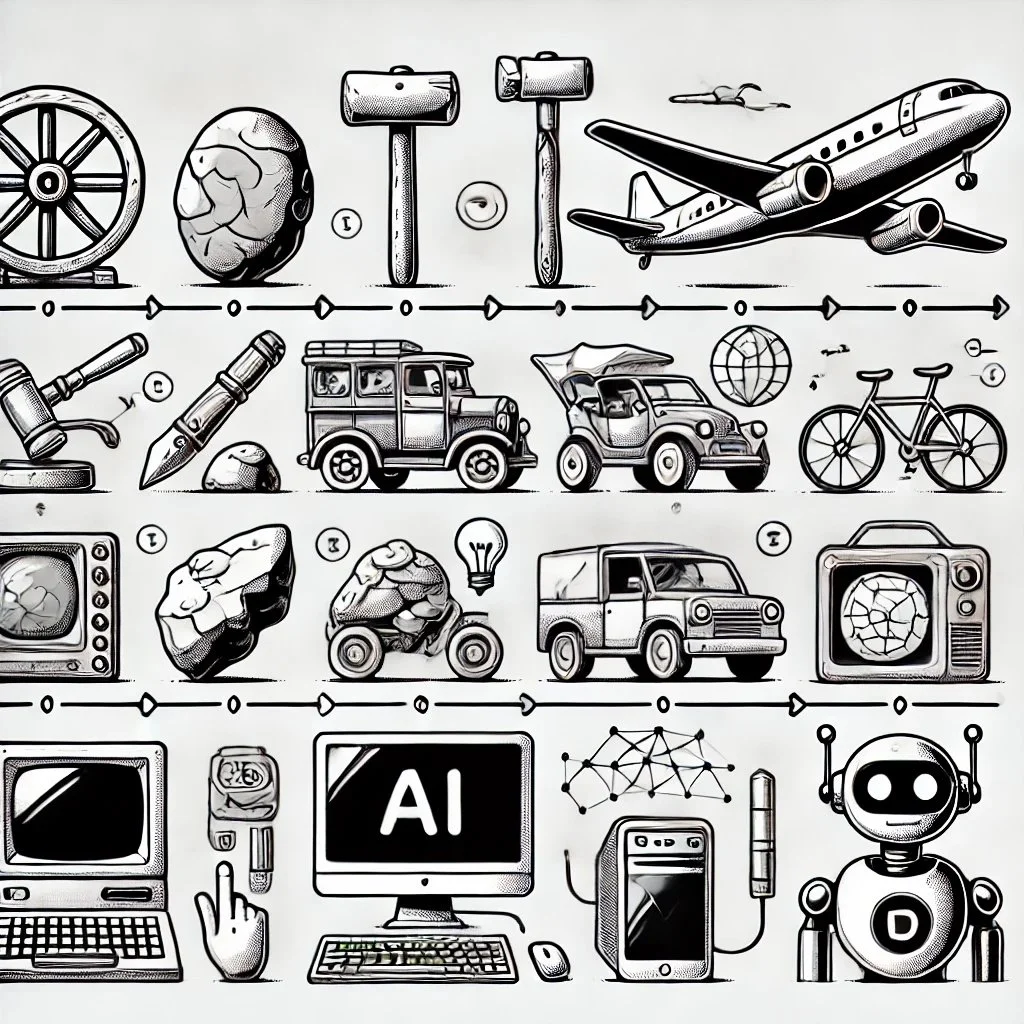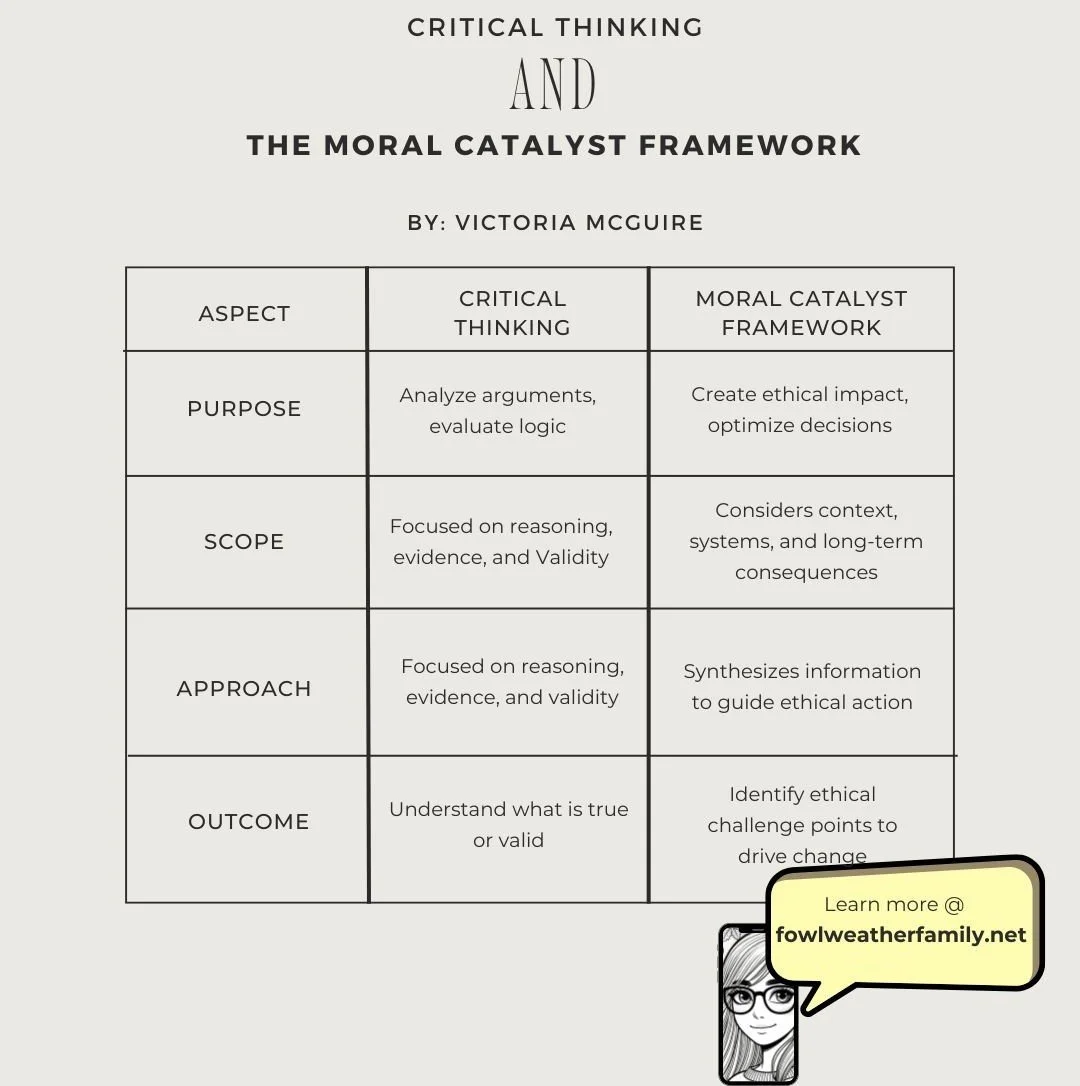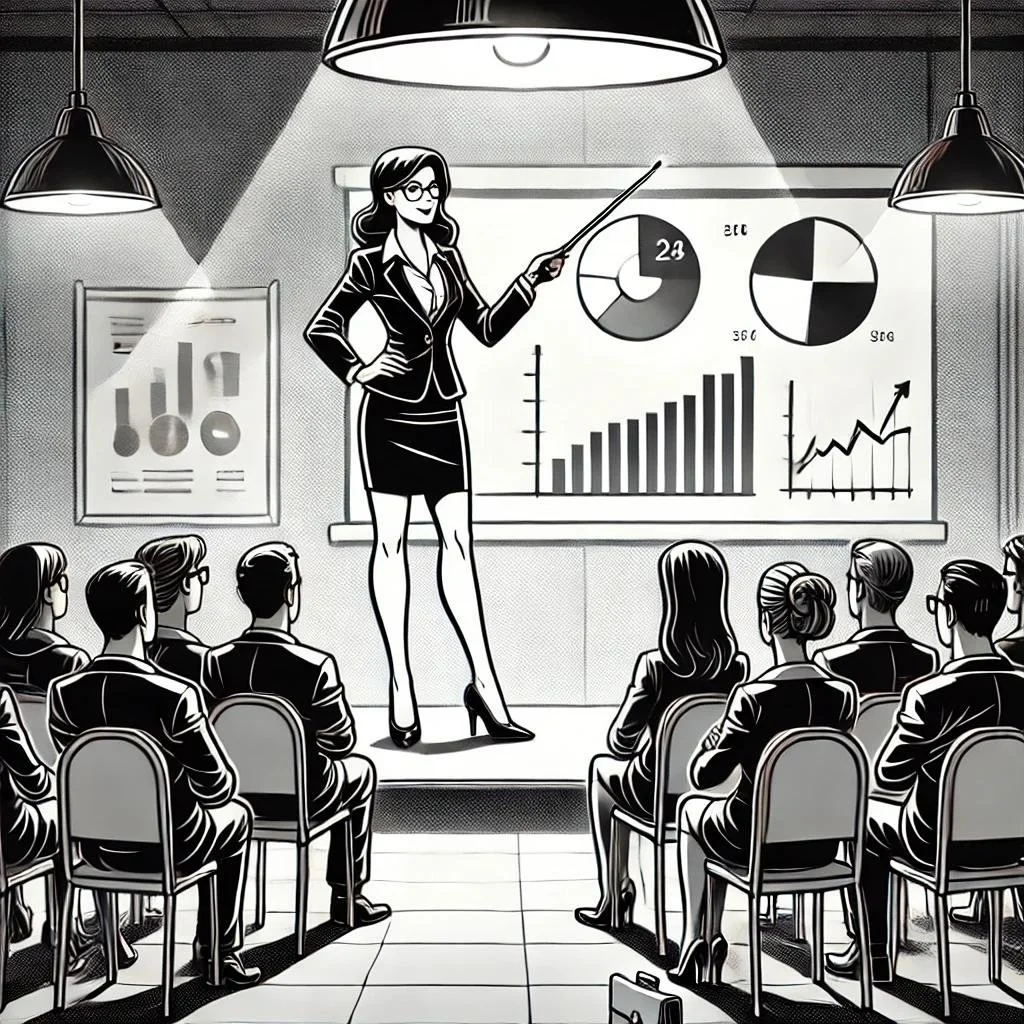Moral Catalyst Framework: The Why?
In an era where ethical dilemmas are increasingly complex, the ability to think critically is essential. A 2023 study by the Ethics & Compliance Initiative found that nearly 50% of employees worldwide observed unethical behavior in their workplaces, yet many lacked the tools to effectively address these situations. This highlights the urgent need for a structured approach to ethical decision-making. While critical thinking helps us evaluate information and arguments, it is not always sufficient for navigating the intricate realities of ethical dilemmas.
This is where the Moral Catalyst Framework comes into play.
How the Moral Catalyst Framework Works
The Moral Catalyst Framework goes beyond analyzing arguments—it finds the best points to create real ethical impact. Unlike critical thinking, which focuses on logic, this framework tackles complex dilemmas, balancing values, systems, and long-term consequences to drive ethical action.
The Moral Catalyst Framework incorporates:
—-> Contextual Analysis – Examining how decisions interact with broader social, economic, and technological systems.
—-> Ripple Effect Mapping – Assessing how choices will unfold over time and impact stakeholders at multiple levels.
—-> Ethical Challenge Identification – Finding key influence points where ethical decisions can create the most meaningful and sustainable change.
Key Differences Between Critical Thinking and the Moral Catalyst Framework
Applying the Moral Catalyst Framework in Business
For leaders looking to embed ethical decision-making into their strategies, the Moral Catalyst Framework provides a clear pathway. By integrating these principles into corporate governance, businesses can:
—-> Enhance stakeholder trust by demonstrating a long-term commitment to ethical standards.
—-> Reduce financial and reputational risk by proactively addressing ethical dilemmas before they escalate.
—-> Foster innovation by creating solutions that benefit the company and society simultaneously.
A Systems-Based Ethical Approach
Rather than relying on fixed moral rules, the Moral Catalyst Framework adapts to complex ethical landscapes by asking key questions:
What systemic factors influence this decision?
Who are the stakeholders, and how will they be affected in the long term?
Where is the best point of intervention to create ethical progress?
By answering these questions when initiating the project scope the framework bridges the gap between logic and action, ensuring that ethical solutions are practical and transformative for all involved.
If this message resonates with you, consider supporting my work:
Let’s chat more about this topic in the comments!
Share and let’s Network!
Buy my designs
Your support drives ethical innovation and systems-based solutions where they’re needed most. Together, we can reshape industries and create better workplaces.
As awareness grows, the vision is to build a team dedicated to optimizing and streamlining home healthcare for our population—ensuring efficiency, dignity, and quality care. Making this vision a reality depends on your continued support.




